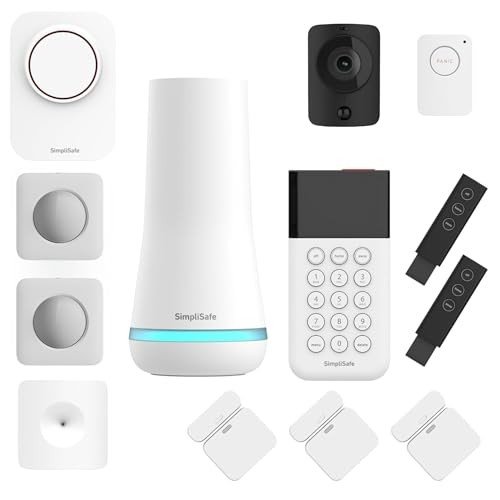10 Things Everyone Hates About Interior Lighting UK Interior Lighting UK

Interior Lighting in the UK: A Comprehensive Guide
Interior lighting plays a crucial role in developing an atmosphere, enhancing functionality, and revealing personal style within homes and companies. In the UK, where the weather condition can be unforeseeable, efficient lighting is not just about aesthetic appeals however also about making spaces feel warm, welcoming, and useful. This article looks into numerous elements of interior lighting, including types, patterns, tips, and frequently asked questions.
Comprehending the Importance of Interior Lighting
Lighting is frequently thought about the foundation of interior decoration. Buy Designer Lighting UK affects state of mind, functionality, and the viewed size of spaces. The ideal lighting can:
- Enhance the architectural functions of a room.
- Highlight artwork and decoration.
- Improve security and security.
- Impact productivity in work spaces.
- Develop a comfy atmosphere for relaxation.
Kinds Of Interior Lighting
Effective lighting design usually includes 3 main kinds of lighting: ambient, job, and accent.
1. Ambient Lighting
This is the main source of light in a room, supplying general illumination. Common sources include:
- Ceiling-mounted fixtures
- Chandeliers
- Recessed lighting
- Soft wall sconces
Ambient lighting produces a foundation from which other lighting types can build on.
2. Job Lighting
Task lighting concentrates on particular areas to facilitate activities such as reading, cooking, or working. This type of lighting assists to decrease eye pressure and can dramatically impact performance. Common sources consist of:
- Desk lamps
- Under-cabinet lights in kitchen areas
- Checking out lamps beside beds
- Mounted lights targeted at work surfaces
3. Accent Lighting
Accent lighting adds drama and highlights particular things or areas, such as art work or architectural features. This type of lighting can create visual interest and depth in a space. Sources consist of:
- Picture lights
- Decorative lamps
- Uplighters
- LED strip lights along racks
Using a mix of these lighting types can result in a well-balanced and multifunctional area.
Popular Lighting Trends in the UK
The interior lighting landscape in the UK continues to progress, influenced by style trends, innovation, and customer choices. Here are some popular trends to enjoy:
- Smart Lighting: The arrival of smart technology has actually transformed how individuals handle lighting in their homes. Smart bulbs and systems like Philips Hue allow users to control brightness and color temperature level through their smartphones.
- Minimalist Designs: Sleek, easy designs that mix effortlessly with interiors are dominating the market. Pendant lights with delicate frames, LED strips, and geometric shapes are especially stylish.
- Industrial Lighting: This pattern showcases raw, unwrapped materials. Metal fixtures and Edison bulbs provide a vintage touch that is both stylish and functional.
- Eco-Friendly Options: With increasing awareness of sustainability, many customers are turning to energy-efficient LED alternatives and fixtures made from sustainable materials.
Tips for Effective Interior Lighting Design
Creating a reliable lighting plan needs thoughtful factor to consider of numerous elements. Here are some suggestions:
- Consider the Purpose of Each Room: Every space has a various function. Consider what activities will take place and what type of lighting will support those activities.
- Layer Lighting: Employ multiple kinds of lighting within a room to develop depth and versatility. Integrate ambient, task, and accent lighting to improve both looks and functionality.
- Use Dimmers: Dimmers permit control over brightness levels, enabling users to adjust lighting according to state of mind and time of day.
- Incorporate Natural Light: Make the many of natural source of lights like windows. Usage light, reflective colors for walls and home furnishings to optimize brightness.
- Think About Color Temperature: Different color temperature levels (determined in Kelvins) produce different atmospheres. Warmer temperatures (around 2700K-3000K) are cozy, while cooler temperatures (4000K+) provide a more medical or energetic feel.
Interior Lighting Mistakes to Avoid
To create a well-lit space, it's vital to prevent typical lighting mistakes. Here are some errors to look for:
- Underestimating Wattage: Insufficient wattage can result in dim, unwelcoming spaces.
- Disregarding Scale: Fixtures that are too small for a room can watch out of location, while large fixtures can overwhelm a space.
- Over-reliance on Ceiling Lights: Relying solely on overhead lighting can develop uninviting shadows; balance with extra lighting types.
- Poor Placement: Misplaced lights can develop areas that are too intense or too dark. Strategy positionings attentively.
Frequently asked question Section
1. What is the difference between warm white and cool white light?
Warm white light (2700K to 3000K) creates a relaxing, inviting environment, perfect for living spaces and bedrooms, while cool white light (4000K to 5000K) is more matched for work spaces as it boosts concentration and clarity.
2. How can I take full advantage of natural light in my home?
To maximize natural light, usage light-colored walls, tactically place mirrors to show light, and choose sheer window coverings that allow sunlight to pass through.
3. How do I select the ideal light fixtures?
Consider the size of your space, the style of your decor, and the function of the area. Ensure the scale of fixtures complements the room and matches the overall aesthetic.
4. Are LED lights better than traditional bulbs?
Yes, LED lights are more energy-efficient, have a longer life expectancy, and can offer a variety of color temperatures, making them a more sustainable lighting option.
5. What should I do if specific areas of my room stay too dark?
Think about adding additional job or accent lighting to brighten those locations. Floor lamps, wall sconces, and even tactically placed table lamps can help relieve dark spots.
Interior lighting is a vital element of home and service design across the UK. Understanding the different types, present patterns, and finest practices can assist home owners in developing spaces that are not just stylish but also practical. With thoughtful consideration and preparation, effective lighting can change any environment, boosting both atmosphere and functionality for years to come.

